This week's edition (the second in our new bi-monthly frequency) invites you into a colorful gallery of stories focused on museums and art. Discover how art is being used as an antidote to the stress of the moment, the treasures of an idiosyncratic-and prescient-20th century collector, and why you can trace modern American social history through the panels of the comics we've loved.
They're among the offerings designed to make sure you continue to enjoy what you've come to value from Smithsonian Associates: programs and experiences that are entertaining, informative, eclectic, and insightful.
A Dose of Art
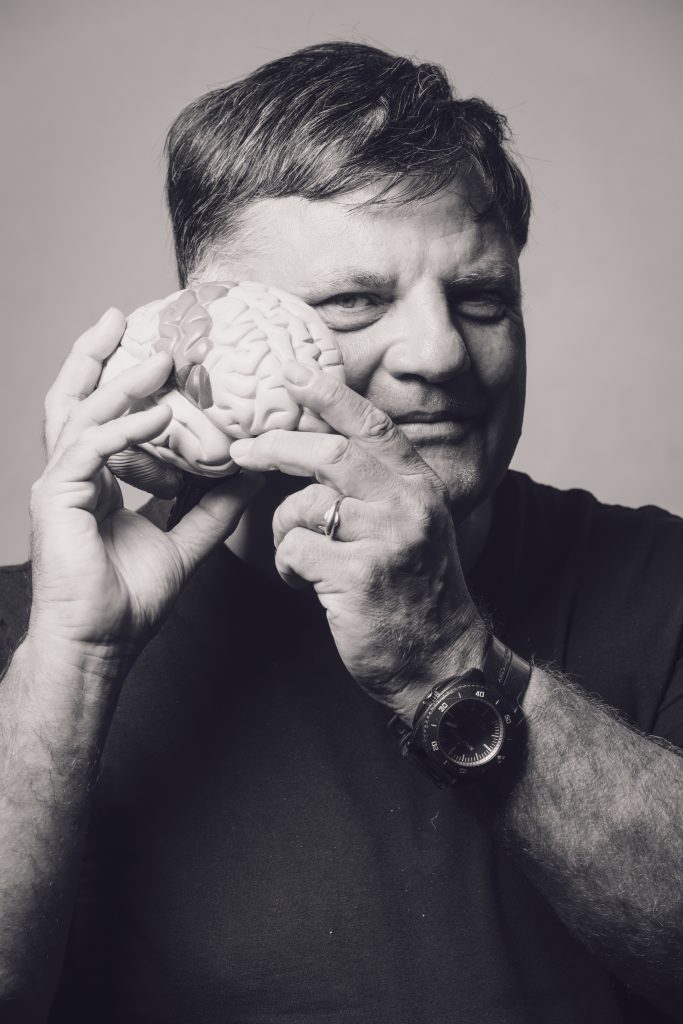 Pierre Lemarquis, author of the French book Art That Heals. Photo: Sylvain Thiollier
Pierre Lemarquis, author of the French book Art That Heals. Photo: Sylvain Thiollier
Doctors in one of the largest hospitals in Brussels have a surprising prescription to combat pandemic-related stress and bolster mental health: Visit a museum. A new program offers eligible participants free admission to five of city's public art institutions. The initiative is inspired by a similar one developed in Quebec in 2018, a study in which patients dealing with a range of medical conditions and their caregivers or family members were offered free admission to the Montreal Museum of Fine Arts. Learn more about the Belgian program, which plans to report on its results next year, in a recent feature on Artnet.
French neuroscientist and author Pierre Lemarquis is an advocate for the power of art to help heal both the spirit and body-the science of which he explores in a recent book. Viewing or making art, he explains, engages brain pathways in multi-faceted, dynamic ways and releases beneficial hormones such as dopamine, endorphins, and oxytocin. "You need medicine that's purely scientific to address the illness, and medicine that's a little artistic, to address the person, their humanity,†says Lemarquis. "The two are complementary. People need to dream. They need imagination.â€
Read the Article
A Collector's Vision
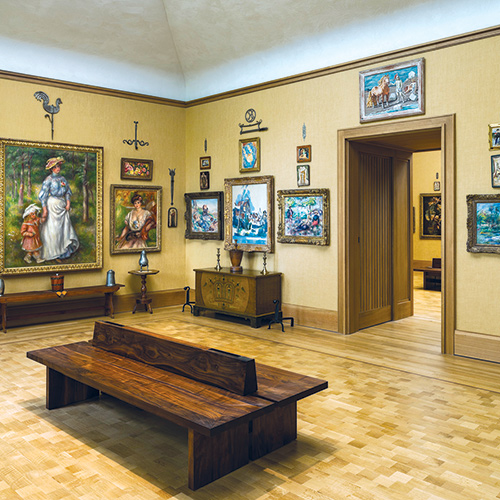 The Barnes Foundation (Photo: Tom Crane)
The Barnes Foundation (Photo: Tom Crane)
One of the most distinctive of American museums reflects the tastes, vision, and collecting passions of a single man: Albert Barnes. Philadelphia's Barnes Foundation showcases what's considered the greatest collection of post-impressionist and early modern art in galleries that display artworks and objects from across cultures and centuries in idiosyncratic groupings that Barnes began to develop in the early 1920s. He eschewed informational labels on the walls, hoping that visitors would instead make their own connections among the diverse mix he curated. For Barnes, art-no matter its style, medium, or creator-was an intensely personal experience.
In a Smithsonian Associates Streaming program on Friday, September 17, Barnes Foundation educator Penny Hansen offers an overview of the museum's history and its dazzling collections. Using high-definition Deep Zoom technology developed by the Barnes, she offers closeup looks at the canvases that reveal their surfaces and details in ways that bring the art and the artists to vivid life.
If the virtual visit whets your appetite for more, join art historian Ursula Wolfman on a Smithsonian Associates in-person study tour to the downtown Philadelphia museum on Saturday, October 23. You can get even closer to the Barnes collection in a series of streaming programs led by Penny Hansen devoted to in-depth explorations of specific artists and collections. She focuses on the museum's Renoir holdings on October 14; works by the innovative early 20th-century artists of the School of Paris on November 11; and wide-ranging examples of African art, of which Barnes was a pioneering collector, on December 9.
In-Person Tour
Wrap Party
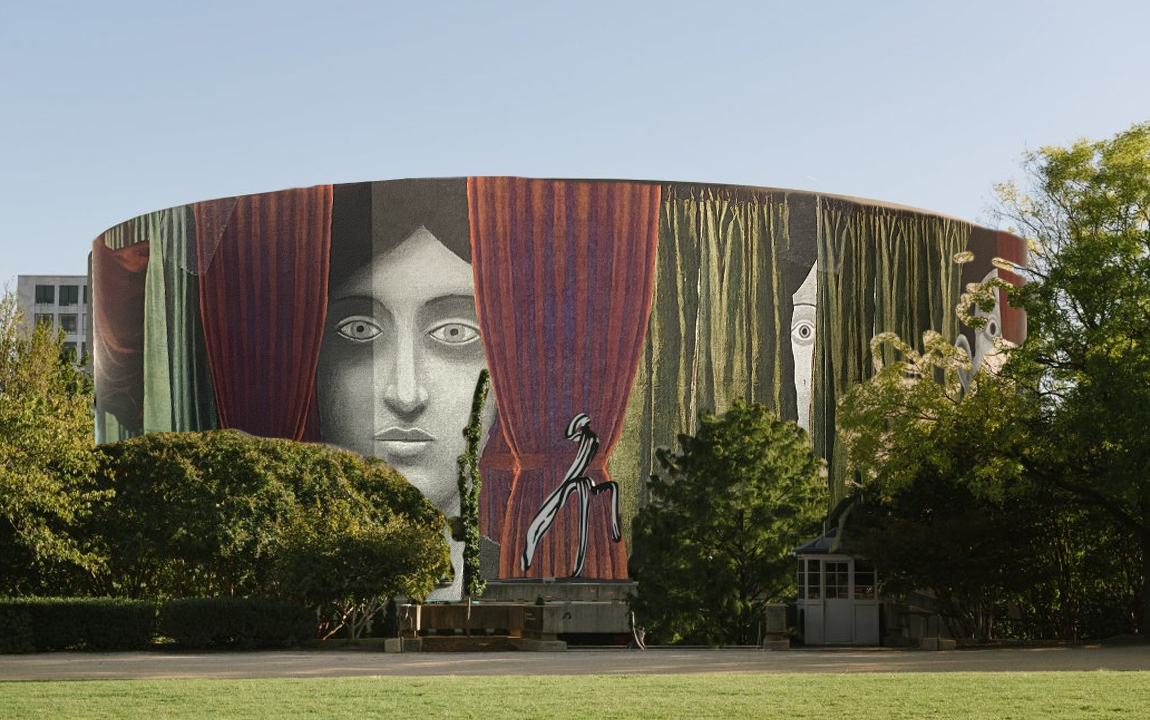 Rendering for the installation Draw the Curtain (2021) by Nicolas Party, commissioned by the Hirshhorn Museum and Sculpture Garden. Courtesy of the artist
Rendering for the installation Draw the Curtain (2021) by Nicolas Party, commissioned by the Hirshhorn Museum and Sculpture Garden. Courtesy of the artist
The exterior of the Smithsonian's Hirshhorn Museum and Sculpture Garden's iconic cylindrical building is the site of internationally renowned Swiss artist Nicolas Party's newest artwork, debuting Sept. 18. "Draw the Curtain†wraps 360 degrees around the temporary scaffolding that encases the museum building and spans a circumference of 829 feet, becoming the artist's largest work to date.
An original pastel work digitally collaged and printed onto industrial scrim, the site-specific public artwork samples a rich selection of curtain images from across art history and combines them with the artist's signature portraits. The commission transforms the Hirshhorn's façade into a monumental canvas that stands out against the landscape of predominantly neo-classical buildings on the National Mall and will be on view through spring 2022 while the building's envelope undergoes critical repairs. You can go behind the curtain with Party in a free online artist's talk on Saturday morning, September 24.
Nicolas Party's creation for the Hirshhorn takes its place in a long line of bold works of public art in America. To learn more about that context, join art historian Janetta Rebold Benton in a Monday, November 1 Smithsonian Associates Streaming program that explores the public artworks of creators including Calder, Nevelson, Oldenburg, and Christo and his wife and partner Jeanne-Claude.
Register for the Program
Comic Chronicles
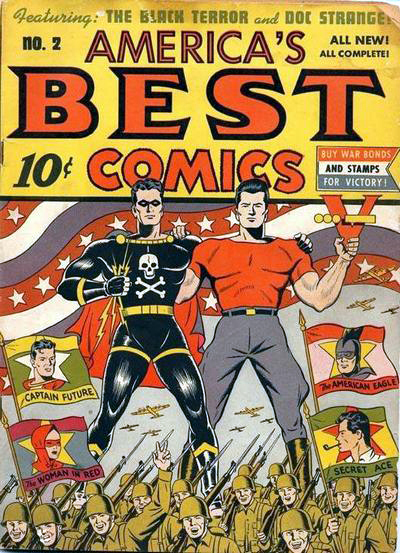 Cover of America's Best Comics number 2, September 1942
Cover of America's Best Comics number 2, September 1942
According to Jeffrey Duber, we can understand how America sees itself by seeing whose stories are in the comics. In a Thursday, November 4 Smithsonian Associates Streaming program, the author of American Comics: A History traces the sweeping story of cartoonsF comic strips, and graphic novels and their continuing hold on the nation's imagination.
He pages through the comics' origins, newspaper's golden age of comic strips ("Krazy Kat,†"The Yellow Kid,†"Dick TracyF), and the midcentury superhero boom (Superman, Batman, Wonder Woman). He revisits the moral panic of the Eisenhower era and the underground comix movement and recalls the grim and gritty Dark Knights and Watchmen. Dauber also pays homage to the graphic novel's rise, thanks to the genius of Art Spiegelman (Maus), Alison Bechdel (Fun Home), and Joe Sacco (Palestine).
Graphic novel storytelling informed Drawn to Art: Ten Tales of Inspiring Women Artists, a collaboration between the Smithsonian American Art Museum and the Ringling College of Art and Design. Each digital story represents an artist with work in the museum's collection, many of whom never received the recognition they deserved during their lifetimes. They include Berenice Abbott, Anni Albers, Romaine Brooks, Maria Oakey Dewing, Carmen Herrera, Corita Kent, Edmonia Lewis, Kay Sekimachi, Alma Thomas, and Mickalene Thomas. View all the online works here, and learn more about their making from writer Howard Kaplan, who was involved in the development of the project's scripts and worked closely with the student-illustrators-all of whom are women-from the college.
Register for the Program
Art in Harmony
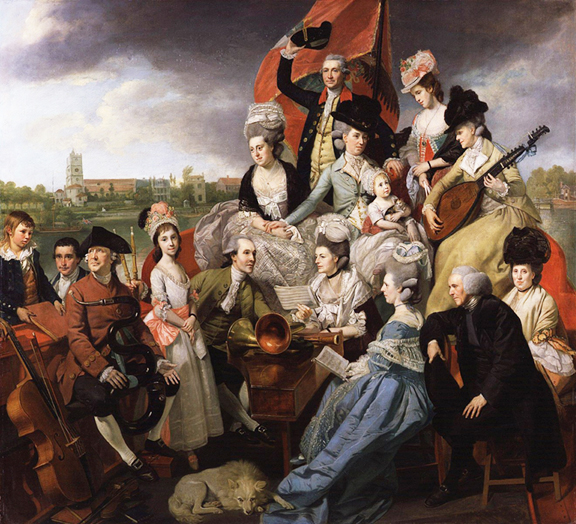 "The Sharp Family" by Johann Zoffany (NPG London)
"The Sharp Family" by Johann Zoffany (NPG London)
A pair of upcoming Smithsonian Associates Streaming series delve into the confluence of the visual arts and other creative forms. Beginning Tuesday, October 7 lecturer and concert pianist Rachel Franklin offers a fascinating four-part look into the intimate relationship between music and art. Topics include Marc Chagall's designs for opera; the musical allegories and symbols embedded in artworks; the story behind a joyful portrait of an 18th-century British musical family; and the role that music played in the lives of Ingres, Delacroix, Klee, and Matisse.
The notion that a picture is worth a thousand words is meant to convey the power of imagery. But what of the power of words-if they are Hemingway's musings on a work of art, Van Gogh's personal letters, or Michelangelo's thoughts on his life and art expressed in his poetry? Explore the alchemy that occurs at the intersection of art and literature in a three-part Sunday afternoon series with David Gariff, senior lecturer at the National Gallery of Art, beginning October 3.
Art Meets Music
The Intersection of Art & Literature